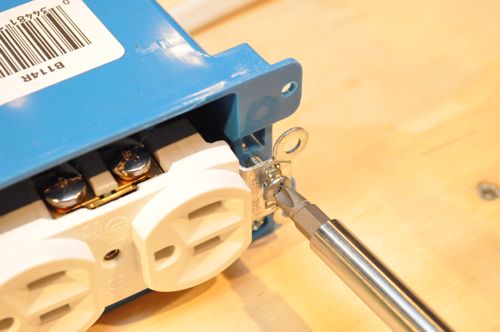First published by Safety+Health an NSC publication.
 The typical office features a collection of wires, outlets, cables and other electrical equipment. Although ever-present and used on a daily basis, electrical equipment requires constant awareness of its associated hazards, as well as training on appropriate use, storage and maintenance, the Indiana Department of Labor reminds employers and workers in its Indiana Labor Insider newsletter.
The typical office features a collection of wires, outlets, cables and other electrical equipment. Although ever-present and used on a daily basis, electrical equipment requires constant awareness of its associated hazards, as well as training on appropriate use, storage and maintenance, the Indiana Department of Labor reminds employers and workers in its Indiana Labor Insider newsletter.
“Improper use of electrical equipment can create overheated equipment, which can lead to fires, shock and electrocution,” warns IDOL, which provides some do’s and don’ts regarding certain electrical equipment.
Extension cords
DON’T use an extension cord as a permanent source of energy and never connect multiple extension cords, also known as “daisy chaining.”
DON’T run flexible extension cords under carpet or through doorways or walls. They’re not a substitute for permanent wiring and shouldn’t be attached to walls/floors with staples or clips.
DO make sure flexible extension cords have the current capacity for the load current – “12-gauge wire cords are recommended.”
DO protect all cords with special covers when subject to foot traffic. “Bright colors and high-visibility elements are helpful.”
DO make sure extension cords have appropriate insulation and/or covers to protect against damage, which could lead to an increased risk of fire and shock injuries.
Power strips
DON’T use power strips as a permanent power source and refrain from daisy chaining them.
DON’T use a power strip that doesn’t have overcurrent protection. Those that have electrical spike protection for digital equipment may be used as a permanent power source – but not daisy chained to an extension cord.
DO use wall outlets for equipment that is left on permanently, leaving the use of power strips for short-term projects only.
Flexible electrical cords
DON’T run flexible electrical cords under carpet or other combustible covers. “This is a serious fire hazard from the potential of overheated cords. Additionally, these cords could be damaged by heavy or sharp objects resting on them, moving across them, or dropped on them.”
Receptacles
DO use receptacles equipped with ground fault circuit interrupters in restrooms and roof outlets – they’re required within 6 feet of a sink or wet process on a worksite. “This protects the worker from the risk of shock and electrocution.”
McCraren Compliance offers many opportunities in safety training to help circumvent accidents. Please take a moment to visit our calendar of classes to see what we can do to help your safety measures from training to consulting.


